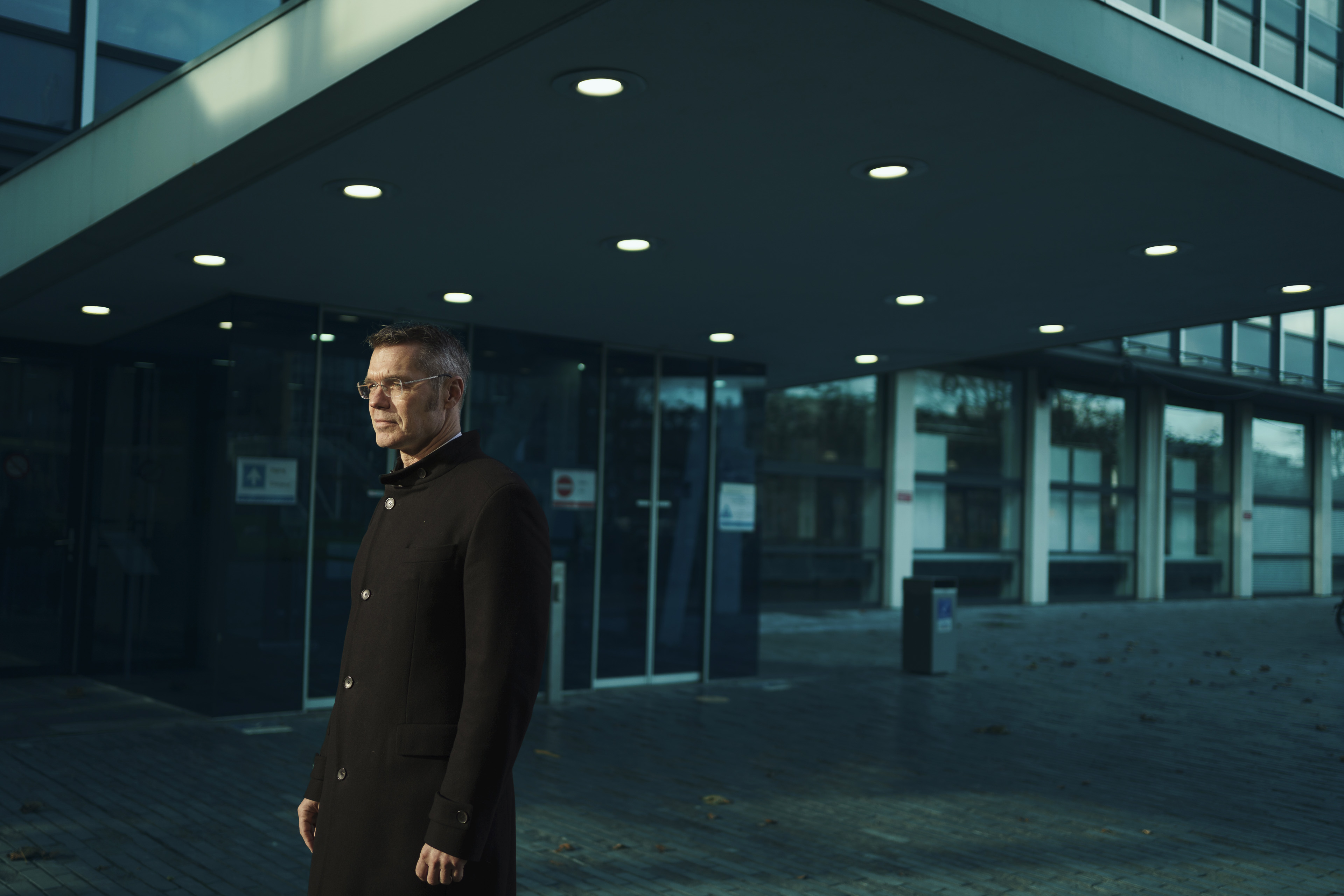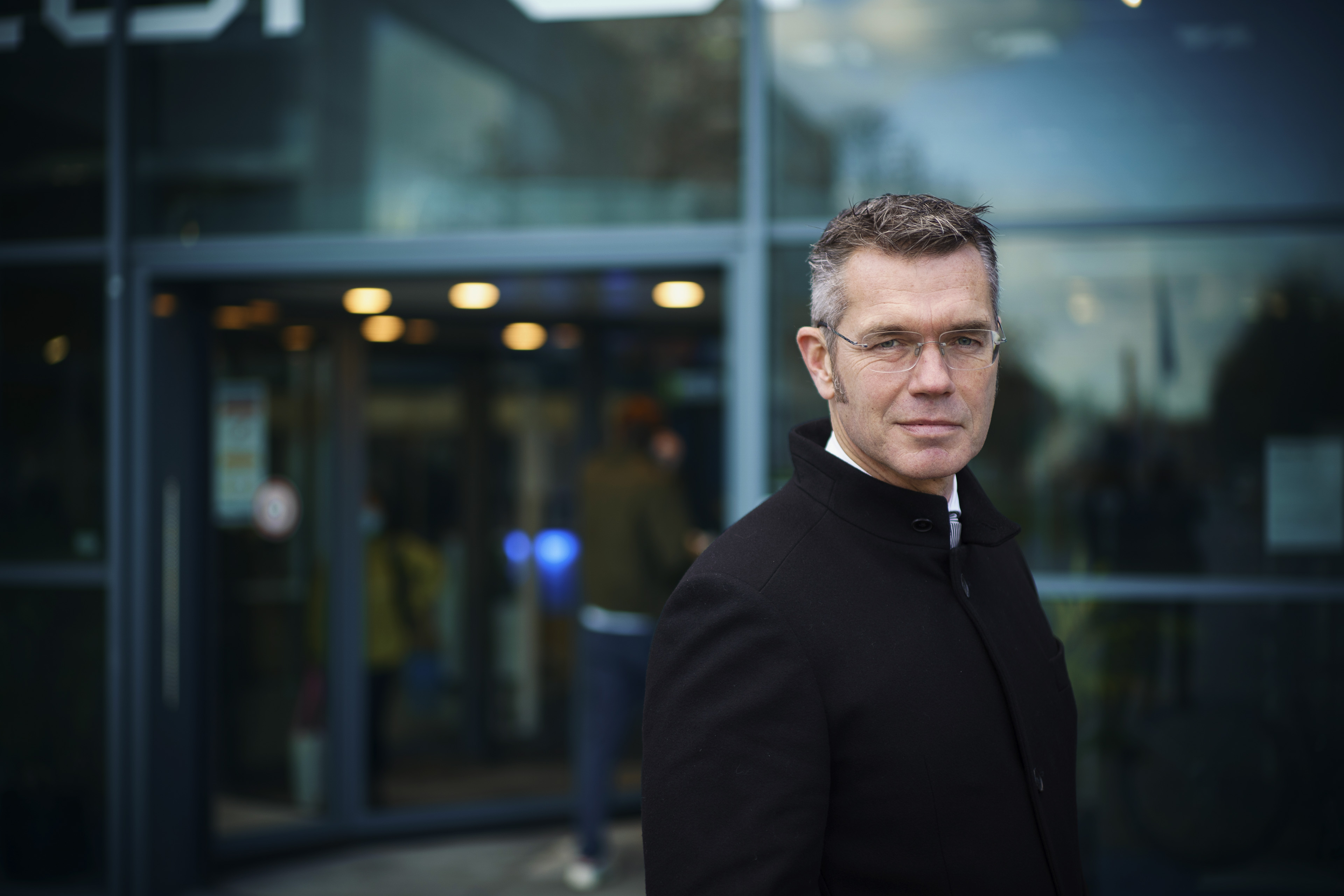It’s January 2007 and Henk van Zuylen, Hans van Lint and Serge Hoogendoorn are standing in front of the entrance to a Sheraton hotel enjoying a breath of fresh air. They are in Washington for the 86th annual meeting of the Transportation Research Board. They are letting their imaginations run wild, philosophising about the huge possibilities of a system in which traffic data and traffic models come together in a virtual 3D environment. ‘The whole of the Netherlands in a petri dish’, jokes professor Traffic Simulation & Computing Van Lint. ‘Perhaps we could we test out the potential effect of traffic and transport innovations in our fight against congestion and efforts to improve sustainability and quality of life’, pipes up Hoogendoorn, Distinguished Professor Smart Urban Mobility. ‘Great plan’, says Professor of Dynamic Traffic Management Van Zuylen, ‘but we simply don’t have the sensor technology available for that.’
Crowd Monitoring System
But work is already underway to change that. In 2015, Hoogendoorn is awarded an ERC Advanced Grant for a five-year research project on traffic theory for pedestrians and cyclists. It turns out that the behaviour of slow traffic is much more complex than fast transport. The project is called ALLEGRO, an unorthodox acronym for unrAvelLing sLow modE travelinG and tRaffic – with innOvative data. Data collection is an essential part of the project. Together with researchers Winnie Daamen, Dorine Duives and Alessandro Bozzon, Hoogendoorn develops a crowd monitoring system that they present to Mayor Eberhard van der Laan during SAIL, the maritime event held every five years in Amsterdam.
With the help of various data collection techniques, such as people-counting cameras or Wi-Fi sensors, they learn all about how the public behave: the time it takes visitors to walk from one location to another, where there is congestion and how people spread themselves across the site. They also discover how you can use social data to conduct analyses of mood during the event. “Big Brother is watching Sail” reports Noordhollands Dagblad newspaper. The Mayor is enthusiastic and sees potential for using a similar system more widely in managing events in the city: ‘How wonderful it would be if we could visualise traffic and transport flows and establish links between the different flows’, he said. ‘Or if we could predict them half an hour or a day in advance to enable preventive action’, adds Hoogendoorn.

Fast-forward to 2020 and this is exactly what’s needed during the coronavirus crisis. The Campus Mobility Dashboard (CMD), for which the final sensor was installed at the end of August, provides an insight into crowding on campus. ‘As well as crowding at different bus stops and various hotspots on campus, we’re also measuring how busy it is on cycle paths, the location of all buses and trains, congestion on the most important roads, how many people are in buildings, etc. These data make it possible to provide important real-time insights and management information that can support the reopening of campus: where are the busy areas? Where are people not social distancing? During the lecture period, what course does campus occupancy take? Are the measures announced in The Hague having an impact on what we can see on campus?’
The Campus Mobility Dashboard combines advanced sensor technology with data analysis and visualisation. It is a unique project in several respects: worldwide, there is no other university with such a clear picture of what’s happening on campus and yet it is still in line with relevant privacy regulations. It’s not just about changes in mobility patterns at macro-level (how many staff are working from home, how many students come to campus by public transport?) but also micro-behaviour (how do pedestrians and cyclists behave in different phases of the crisis, are they keeping sufficient distance, is habituation occurring, how does this scale up and what does it teach us about infection risks?). Of course, all of this is important now, but it also has plenty of potential after the pandemic. Hoogendoorn: ‘The CMD offers TU Delft the digital infrastructure to develop and test countless innovations in the field of mobility. From offering micro-mobility at bus stops, to Mobility-as-a-Service, to high-speed shuttles that provide access to Delft Campus station.’
"The Campus Mobility Dashboard gives us the digital infrastructure to develop and test countless innovations in the field of mobility."
‘We now have the algorithms up and running for the predictions we were talking about five years ago. A quarter of an hour in advance, a day in advance, with the data we’re now collecting and the AI techniques we’ve developed, it turns out to work quite accurately. In turn, this offers countless opportunities for numerous use cases in the field of real-time control of traffic and transport, the planning of mobility services and the design of transport networks. There are all kinds of initiatives for pilots and we’re preparing several research proposals, including in the field of bicycle traffic management, multimodal hubs, predictive information for people travelling to campus and the management of pedestrian flows.’ That makes the CMD much more than a system to support reopening the campus: it is the digital backbone for the most innovative campus in terms of mobility.
‘TU Delft is demonstrating how we can take something as dramatic as Covid-19 and use it to develop appealing innovations and world-class scientific research. Innovations that have been made possible because various faculties, supported by the EB and relevant services, such as CRE&FM and ICT, have joined forces. It's a solution for a current problem that offers opportunities for the future. “Never waste a good crisis” – it may be something of a cliché, but in this case it really applies.’

‘Putting your heads together and working on ways of dealing with the pandemic also nicely reflects the way that I personally deal with setbacks, always trying to find a framework for action, occasionally against my better judgement. Always in search of a silver lining and a purpose. And often you emerge in a better place than you were at the start. Not always, but often. I try to put this across within my department, by discussing my own disappointments and setbacks, as well as how I attempt to deal with them. Many colleagues – especially PhD students, post-docs and students – have been struggling during this period. I hope that involving them in initiatives like this, offering them a framework for action, enables staff not only to contribute to solving concrete problems, but also makes them feel less powerless and maybe even slightly better able to deal with the situation. It’s not a panacea, but every little helps.’
"We now have the algorithms up and running for the predictions we were talking about five years ago"
‘Of course, I’m also looking forward to having personal contact again with my PhD students and other colleagues. But I realise that I’m privileged. Working from home causes virtually no problems for us, the work is sufficiently challenging and I’m in a unique situation in being able to work with my wife Sascha Hoogendoorn-Lanser on new initiatives like the CMD. All of this allows me to make a special contribution and establish something new that I’m convinced will bring great acclaim for TU Delft.’
‘We’ve now managed to equip the campus with a digital infrastructure that can be used for a series of innovations. Extending it into the city and the wider region is an obvious next step. The idea of the Netherlands in a petri dish turned out to be not so crazy after all.’

